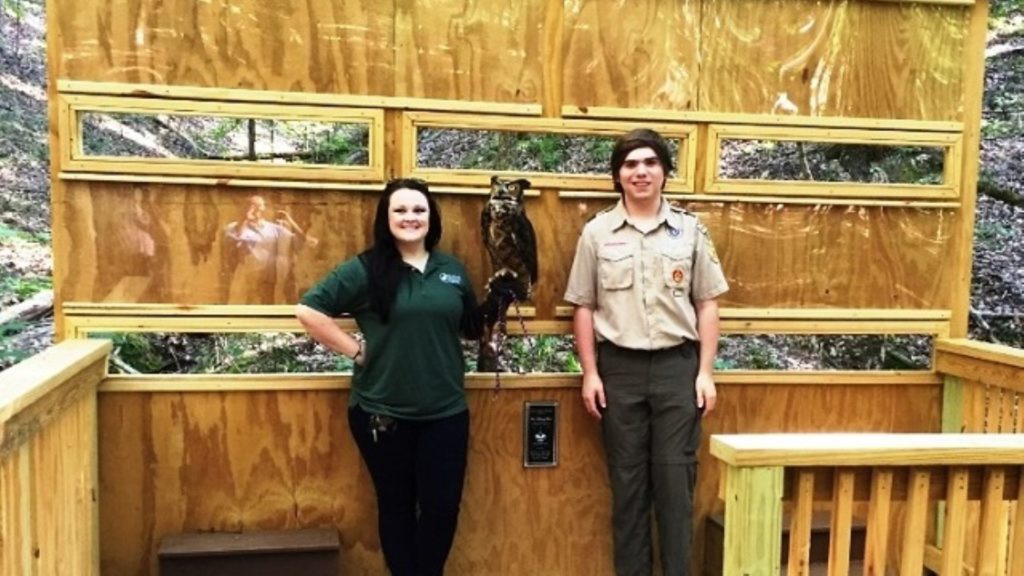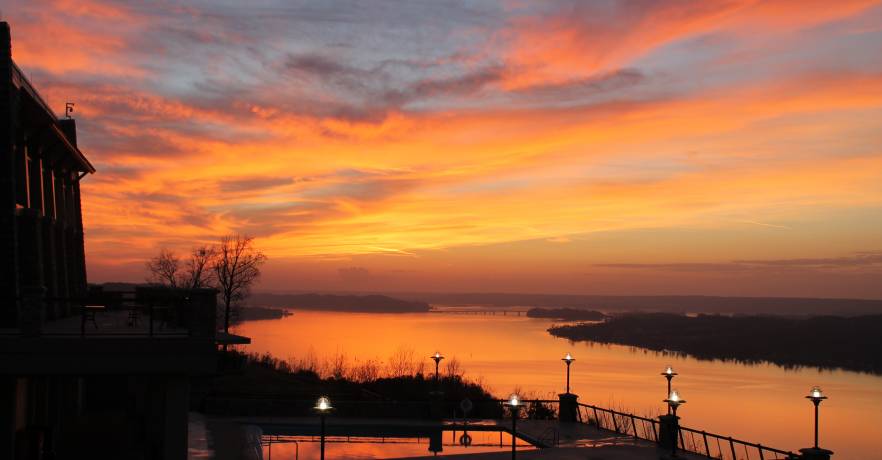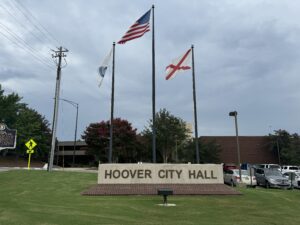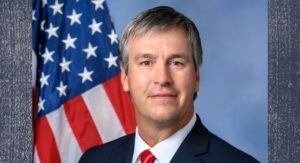Officials firming up ‘B Active Plan’ for better walking and bicycling in Birmingham area

Nine months into the process, expert planners, walking and biking enthusiasts, nonprofit leaders and others are making major headway toward developing a regional pedestrian and bicycling master plan for the Birmingham area. Officials and citizens actively involved in the process gathered last week to take a first look at draft maps that provide a first, broad sketch of a regional walking and bicycling network that would link communities across Jefferson and Shelby counties and even stretch into portions of Blount and St. Clair counties. Dubbed the “B Active Plan,” a final proposal is expected to be ready by late spring 2018. More than 1,000 people across the region have provided input into the plan so far, through public outreach and the B Active website, said Lindsay Puckett, with the Regional Planning Commission of Greater Birmingham (RPCGB), which is coordinating the project. More public feedback was gathered Tuesday night during an open house at Cahaba Brewery in Birmingham. “We went to the public to ask: where do you want to see better walking trails, off-road trails … sidewalks, and bicycle facilities,” Puckett said. Planners and experts then took that information and compared it with the existing road network, while also identifying the places – such as parks, local attractions, shopping and business centers – “where you would want to take your bike,” Puckett said. The plan will ultimately provide a menu of options for municipal, county and state planners for creating better routes and improving existing roads in metro Birmingham, so they are more conducive for walkers and bikers. In addition, the plan will provide a big-picture roadmap for connecting walking- and biking-friendly routes across the multi-county region. For now, the proposed maps show a 10,000-foot-view of a network of proposed routes across the region, spreading out from downtown Birmingham as far south as south Shelby County, north to northern Jefferson and southeast Blount County, and into western St. Clair County. The plan incorporates many existing trails and sidewalks, such as those already identified as part of the partially built Red Rock Trail System in Jefferson County. But the plan goes beyond that – identifying potential walker- and biker-friendly routes that could ultimately connect more far-flung regional attractions, such as Oak Mountain State Park, Ruffner Mountain, Red Mountain Park, Lake Purdy and Railroad Park, as well as town centers across the region. Puckett said the draft network will be posted shortly on the B Active website, so the public can take a closer look. RPCGB is working with Toole Design Group, a nationally known planning and engineering firm that specializes in bicycle and pedestrian transportation, to help finalize the plan. Meanwhile, many cities and counties in the region are pressing on with their own bike and pedestrian master plans, and making progress in extending sidewalks, building trails and upgrading streets to be more bike- and walker-friendly. During last week’s meeting, for example, officials with UAB provided details on plans to make more streets around the campus more bike- and pedestrian friendly. Utility work is already under way along a portion of 10thStreet South, on the south end of the campus, in advance of work that will reduce automobile lanes on the street and add a bike lane. Birmingham officials, meanwhile, are holding public meetings on a citywide transportation plan that would add more walker- and bike-friendly routes and better connect them to public transportation. Some of the ideas already being discussed are improvements along 20th Street downtown, and from Five Points South over Red Mountain to Homewood. The city has scheduled three meetings: Tuesday, Jan. 30, from 6 p.m. to 7:30 p.m. at the downtown Birmingham Public Library; Tuesday, Feb. 6, from 6 p.m. to 7:30 p.m. at the Birmingham Crossplex; and Monday, Feb. 12., from 6 p.m. to 7:30 p.m. at Our Lady of Lourdes Catholic Church, 980 Huffman Road, to gather public input into the transportation plan. Republished with permission from the Alabama NewsCenter.
Visitors can donate at Alabama state parks to give volunteer projects a boost

At DeSoto State Park atop Lookout Mountain in northeast Alabama, an Eagle Scout candidate built a green pitcher plant demonstration bog so guests can see the rare plant without damaging the natural bog. At Oak Mountain State Park in north Shelby County, the Back Country Horsemen are building stalls at the equestrian campground so overnight campers will have somewhere to keep their horses. Austin Evans built a demonstration bog at DeSoto State Park for his Eagle Scout project so that visitors would see what the natural bog for the green pitcher plant was like without disturbing the habitat. (Photo / Alabama State Parks) Gulf State Park in Gulf Shores, a Boy Scout troop pitched in with another group to build and install 15 bluebird nesting boxes. All these projects were tackled by volunteers and could not have been done without the free labor and, often, donated materials. The Alabama State Parks System survives and thrives with its partners, whether they are vendors who contract to deliver goods and services or volunteers who are willing to give of their time and money to enrich visitors’ experiences. “It is incredible and humbling when you see the effort that goes into these volunteer projects,” said Greg Lein, director of the Alabama State Parks System. “Everyone in our department knows how much the people of Alabama love our parks. The fact that people choose to spend their free time working to make our parks more fun, more appealing and more visitor-friendly helps us focus on doing the best job we can.” The Back Country Horsemen built stables at the equestrian park at Oak Mountain State Park, just one of several volunteer efforts at the park in Pelham. (Photo / Alabama State Parks – Anna Jones) Not everyone who loves Alabama’s state parks is able to devote time to work on special projects. To assist those who can, anyone can contribute to their favorite state parks in your community or throughout Alabama while making a note that the contribution is for the Volunteer Fund. Money can be designated for specific efforts at the park – such as for the young man planning to build 30 animal-proof garbage receptacles for Joe Wheeler State Park as his Eagle Scout project – or can be made as a general donation for any volunteer undertaking. “Many volunteers use donations of money or materials from businesses in their communities or from friends or family, but this fund gives park users the opportunity to take help even if they can’t come out and contribute physical labor,” Lein said. Donations to the Volunteer Fund can be made at the main office of any state park. For information about becoming a volunteer, please visit alapark.com/volunteering. Republished with permission of Alabama NewsCenter.
Kay Ivey: Exploring Alabama’s state parks

Summer is officially here— school’s out, graduations have wrapped up and the summer heat is in full swing. As you make summer travel plans for your family, consider exploring Alabama the beautiful. Alabama is home to over two dozen state parks reaching from the sugar-white beaches of the Gulf Coast to the foothills of the Appalachian Mountains. The state parks have in total 48,000 acres of land and water. With over 75 years of service to our State, the state parks acquire and preserve natural areas to develop, furnish, operate and maintain recreational facilities, and extend the public’s knowledge of the State’s natural environment. No matter your age, the state parks have an activity or amenity for you to enjoy. With more than 2,500 modern campsites, cabins and six resorts, there is plenty of room for an overnight, weekend or week stay. The parks provide public access to waterways for boating, fishing, water skiing and wildlife viewing. Also, there are miles of trails for biking, horseback riding, backpacking, geocaching, running and walking. Many of the parks have an opportunity for a wonderful dining experience. When looking for a place to cool off, waterways can be found all across this State. Water recreation can be enjoyed at the Gulf State Park on the white sand beaches of the Gulf of Mexico; Meaher State Park in Spanish Fort on the Mobile Delta; Lake Jackson RV State Park in Florala; Frank Jackson State Park in Opp; Blue Springs State Park in Clio, featuring a crystal clear underground spring; Wind Creek State Park on Lake Martin; Lakepoint State Park on Lake Eufaula, known as the bass capital of the world; Lake Lurleen State Park in Coker; Joe Wheeler State Park in Rogersville offering golfing on Wheeler Lake; and, last but not least, Lake Guntersville, Alabama’s largest lake. Two Alabama State Parks offer the unique experience of cave tours. At Rickwood State Park in Warrior, the massive 260 million-year-old cave is a must see. The underground wonder is a cool activity to escape the sweltering summer heat. The Cathedral Caverns State Park in Woodville is named for its cathedral-like large opening to the cave. The cave tours are sure to be the best 90 minutes spent touring our State’s natural wonders. Miles of trails can provide a source of exercise while viewing Alabama’s beautiful nature at our State’s largest park, Oak Mountain State Park. Cheaha State Park in Delta and Desoto State Park in Fort Payne provide mountain-top retreats. Bucks Pocket State Park in Grove Oak in the foothills of the Appalachian Mountains and Monte Sano State Park in Huntsville have serene mountain-setting experiences. The Chewacla State Park in Auburn provides trails for those looking for a challenging mountain bike trail. Our state parks in Alabama have recently faced critical budget issues and many devastating closures. This past Legislative Session, state Sen. Clay Scofield made a bold move for the sake of Alabama’s State Parks. SB260 is a constitutional amendment to permanently protect Alabama’s State Parks funding from being transferred to any other agency. The Constitutional Amendment will appear on the General Election Ballot in November for the people of Alabama to make a permanent decision in favor of the State Parks in our State. A vote for state parks is a vote for our future generation’s wildlife experiences. Each state park in Alabama provides a unique experience with a variety of amenities to enjoy. I encourage you to support our State and enjoy Alabama this summer. • • • Kay Ivey is the lieutenant governor of Alabama. Elected in 2010, she was the first Republican woman in Alabama’s history to hold the office.
Environmental groups, Alabama face off over hotel for Gulf State Park
Two of Alabama’s premier state parks could soon get their own hotels — if they can overcome legal battles, budget cuts and public dissent. Gulf State Park, on the coast, and Oak Mountain State Park, just south of Birmingham, are both planning major upgrades accompanied by multimillion-dollar lodging complexes. Staying in a full-service suite might not be everyone’s version of a night in the great outdoors, but officials say hotels are needed to attract new visitors and new revenue. The Gulf State Park project, the larger of the two, has existed in various forms since Hurricane Ivan damaged the 6,150-acre park in 2004. The storm ruined a convention center that two Alabama governors have now spent a decade trying to rebuild. On April 20, 2010, the park and its treasured white sand beaches faced another catastrophe with the Deepwater Horizon catastrophe, when millions of gallons of oil spilled into the Gulf of Mexico. Along with a new full-service hotel, a master plan for the $85 million project — managed by the University of Alabama — includes restored ecological areas and new educational facilities. The goal is to finally replace the former hotel with a modern facility for an environmentally conscious generation, Alabama State Parks Director Greg Lein said. “You don’t just put it back,” Lein said. “Why do you rebuild a building that was built in the 1970s? You need to think about the present and the future.” But a lawsuit from an environmental group threatens to strip more than half of the project’s funding. The Gulf Restoration Network in October sued the U.S. Department of the Interior and several other federal agencies over their decision to allow Alabama to use $58.5 million of the state’s allotted $100 million recovery funds from the 2010 BP oil spill. This month, a federal judge agreed to move the lawsuit from Washington, D.C., to the southern federal district in Alabama. Jordan Macha, a policy analyst for the Gulf Restoration Network, said Alabama is missing an opportunity to repair and restore wetlands and other habitats damaged by the oil spill. “When you look at recreational loss of use and the criteria for what constitutes loss of use, hotel and convention center does not fall into that category,” Macha said. “There were no oiled convention centers during the BP disaster.” Focus groups with a wide range of interested parties — including residents, business owners, scientists and developers — are being conducted to understand what the park needs, said Nisa Miranda, director of the University of Alabama Center for Economic Development. “We’re living in a more modern age,” she said. “People are more conscious and interested in being respectful and taking into consideration natural resources, so the vision and the mindset for this project is very forward-thinking.” This is the second time Alabama’s attempts to build a new conference center at the park has drawn litigation. A court blocked an earlier plan to build a 350-room hotel and let Auburn University lease it to a private management company. At Oak Mountain State Park, a recent feasibility study recommended a “lodge”-like facility with 175 rooms and 20,000 square feet of meeting space. The $35 million project is estimated to have an annual economic boost of $18.4 million. Shelby County Manager Alex Dudchock said plans are still in the preliminary stage. He said it would be an amenity that’s not already in the park or in Shelby County. “When you add in all the wonderful outdoor recreational options that the park provides, it would be an impressive array of offerings that visitors could appreciate,” Dudchock said. Yet some want Alabama’s largest state park to maintain its rustic feel. Keep Oak Mountain Wild, a nonprofit formed to fight the development, mentions a number of criticisms on its website. An online petition urges readers to oppose the project. Despite plans for growth, the entire park system is preparing for massive cuts. The system could be forced to close 15 of 22 parks, as the Alabama Legislature and Gov. Robert Bentley look to solve a looming budget crisis over a shortfall in the 2016 general fund. Bentley and lawmakers have been at odds about where to make cuts and where to raise taxes to keep Alabama afloat. According to park system officials, lawmakers could remove millions from the Alabama Department of Conservation and Natural Resources budget for 2016. About $10.4 million of the $11.4 million in possible cuts would come from the State Parks System. In an interview this month, Lein said it’s tough to plan long-term growth for the park system when it’s faced with short-term uncertainty. “How do I keep the park system attractive when there’s all this gloom and doom about the budget? How do you deal with that?” Republished with permission of The Associated Press.


